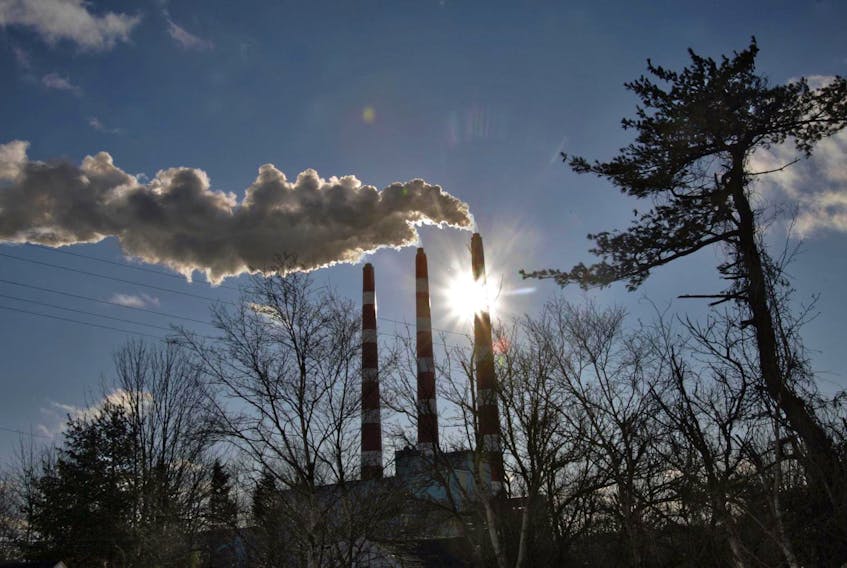Nova Scotia is looking for someone to study the potential in the province to generate carbon offset credits.
The official Request For Proposals was posted online earlier this week.
Jason Hollett, the provincial Environment Department’s executive director of climate change, said the current cap and trade program covers about 80 per cent of all of the emissions in Nova Scotia in about 25 or 30 companies.
“There’s potential to generate offsets that would be used in the cap and trade program but that would come from that 20 per cent that’s outside of the ... covered entities in the province,” Hollett said.
That means those in the 20 per cent could create a project that can sell the credits into the cap and trade program to the regulated companies, he explained.
The RFP stipulates that a successful proponent’s study “will identify the sectors, project types, and protocols that are most viable in Nova Scotia, as well as identify risks and opportunities relating to offset projects.”
Hollett said the hope is to get an assessment of what type of projects are out there that are feasible.
“And then also, what potential is there, so is there the infrastructure there behind it to develop, is there a business interest in developing it as well, or a community interest in developing it.
“We want to know where we should be focusing our effort as we push forward on a framework for carbon offsets here in Nova Scotia.”
How it works
The way cap and trade works is a clean project that reduces greenhouse gas emissions earns credits that it can then sell to industries that produce carbon.
“One example you’ll often hear about is forestry,” said Meghan McMorris, community energy co-ordinator with the Ecology Action Centre.
Planting trees instead of clearcutting works for carbon offset because large forests capture carbon as the trees grow.
“Overall, it’s good that they’re going to be doing their research because they did say that offsets would be a part of the system,” McMorris said. “But we’re feeling very cautious about it. We know that with offsets and credits, often polluters keep polluting because they can buy their way out of polluting and we know that communities that live closest to those polluters continue to suffer from environmental racism. They continue to be sick because the pollution doesn’t stop.”
Larry Hughes, professor and founding fellow at the MacEachen Institute at Dalhousie University, said carbon offset is a world-wide phenomenon, with the goal being a 50 per cent reduction in global emissions by 2030.
It’s a tall order.
“Simply cutting back on our usage won’t be enough,” he said
Hughes said as well as forest growth, Nova Scotia can possibly also consider algae as carbon sinks.
“The big concern about biological carbon capture and storage, which essentially is what we’re talking about, is something like a forest fire or a hurricane wiping things out, because that would mean that your carbon that had been captured is now going to be, if it was fire, would be released,” Hughes said.
If the forest is wiped out, that carbon sink would disappear.
He’s not sure that efforts in our province will make much of a dent globally.
“It’s a drop in the ocean,” Hughes said. “At least we can say we’re doing our bit and that is important but in the grand scheme of things ... I think it’s going to be very difficult achieving 50 per cent reduction by 2030.”
“It’s a laudable goal but we’re not going to do it by changing the energy system. We’ll change part with the energy system, but it won’t be enough by any stretch of the imagination.”
For McMorris, it’s important that the government sets targets for greenhouse gas emissions that are “ambitious.”
“Carbon pricing and cap and trade is one tool in the toolbox for how we can achieve greenhouse gas emission reductions and I think Nova Scotians are wanting that,” she said.
McMorris added that the international carbon offset is completely flooded so the financial benefit may not be as good as people perceive.
Hollett said the province’s cap and trade program is solely within Nova Scotia.
McMorris is worried about potential abuse.
“We do know, I don’t think it’s a secret, that different government officials are talking to gas companies,” McMorris said. “Really, if we were to have ... LNG come to the province, it would be the largest emitter in the province and offsets could be used to just offset its pollution. Which really defeats the whole point. So that’s, really, why we’re very cautious about this.”
At this point, McMorris is encouraging whoever wins the bid to conduct comprehensive research.
The RFP closing date is Sept. 30.
RELATED:









